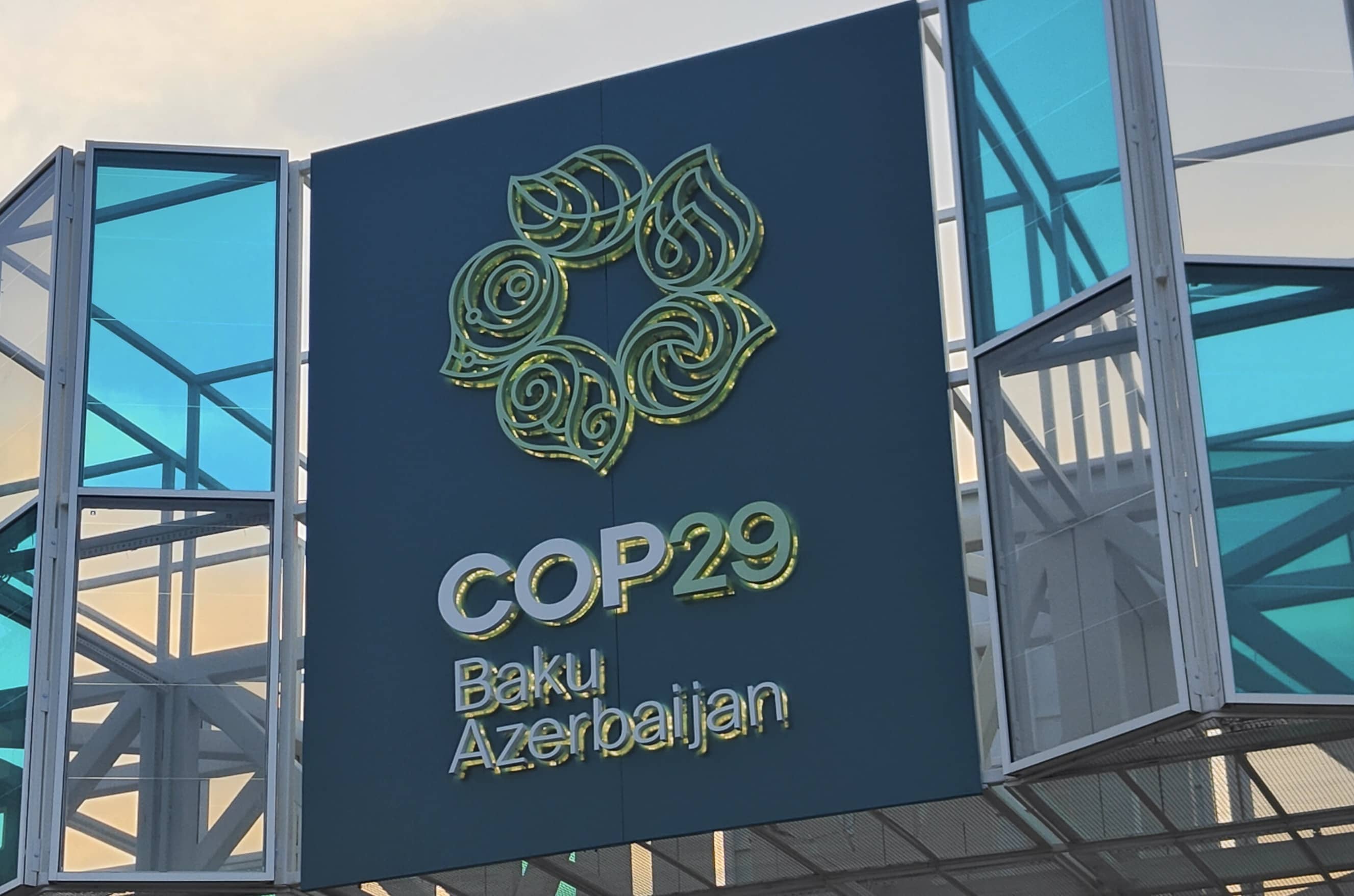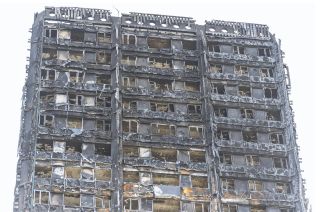
www.buildingsandcities.org/insights/commentaries/cop29-flop.html
COP29: Flop for Climate, Recognition of the Built Environment

Highlights from the 2024 COP29 conference in Baku
Matti Kuittinen (Aalto University) reflects on the UN's 29th Climate COP, leaving a sense of disappointment and frustration among delegates and observers. The event yielded a commitment of only $0.3 trillion for climate funding, falling drastically short of the $1.3 trillion requested by developing nations. COP29 saw the broader recognition of the role of the built environment - including the launch of the International Council for Buildings and Climate (ICBC).
The funding gap underscores the urgent need to address both the escalating costs of climate change and the investments required to transition to a sustainable, fossil-free future. Developing countries were vocal in their dissatisfaction, highlighting the urgent need for resources to prepare for weather-related disasters, develop sustainable infrastructure, and adapt to changing climatic conditions. These needs are immense, and the stakes are high: failure to secure adequate funding risks leaving the most vulnerable nations ill-equipped to face intensifying challenges. Historically, Europe and the United States have borne the greatest responsibility for global warming. However, the BRICS nations now account for 42% of global GHG emissions, reflecting a shifting landscape of accountability and capability.
A contentious issue at COP29 was the definition of a "developing country." When the Kyoto Protocol was adopted three decades ago, nations like China, South Korea, and oil-rich Middle Eastern states were classified as developing. Now, many of these countries have achieved significant economic growth, leading developed nations to argue that they should shoulder a greater share of climate financing. This debate, unresolved at COP29, represents one of the critical barriers to more equitable and effective climate action.
The venue for COP29-Azerbaijan, a nation heavily reliant on fossil fuels-fuelled scepticism about the conference's potential outcomes. President Ilham Aliyev's opening speech, in which he described oil and gas as a "gift of God" and defended fossil fuel exploitation, set a tone that many felt was antithetical to the event's purpose.
The conference ran over 30 hours past its scheduled conclusion as deep divisions persisted. Some delegations described the event as poorly managed, with little leadership during pivotal negotiations. A European representative criticised the host country for failing to mediate between differing viewpoints, while other delegates characterised the discussions as "chaotic." The atmosphere was further strained when several delegations, including those from small island states, the European Union, and the US, walked out of the final rounds of talks.
A step back from COP28
In several respects, COP29 marked a retreat from the progress achieved at COP28 in Dubai. Last year's conference produced a landmark agreement to phase out fossil fuels, a decision that was widely celebrated as a significant step forward. By contrast, oil-producing nations at COP29 successfully blocked any references to fossil fuels in the final text, reflecting a troubling regression in climate ambition.
The lacklustre outcomes of COP29 place immense pressure on the next climate COP, set to take place in Brazil in 2025. Dubbed the "COP of Cities," the event will focus on urban areas and the built environment, sectors critical to achieving net-zero targets.
Sharpening focus on the built environment
Despite its broader shortcomings, COP29 brought greater recognition to the built environment's pivotal role in addressing climate change. Key developments included the official launch of the International Council for Buildings and Climate (ICBC), an array of construction-themed pavilions, and a renewed call for collaboration among researchers and policymakers.
The ICBC aims to advance the implementation of the Chaillot Declaration, a global policy framework introduced in March 2024 to promote the decarbonisation of buildings and infrastructure. Speaking at the Buildings and Cooling Pavilion, Kennedy Matheka of the Kenyan government suggested that the ICBC could pave the way for a new international treaty on the climate impacts of construction. Afterall, the only global treaty is the existing Safety and Health in Construction Convention of 1988.
One of the underlying issues behind the previous lack of recognition of the role of the built environment may lie in how it is globally managed. Buildings and infrastructure typically fall under the responsibility of cities and municipalities, which do not have a mandate to participate directly in climate negotiations at COPs. Multilevel engagement appears necessary in the future, as the role of the built environment cannot be decided without the involvement of the owners and operators of these assets.
Researchers echoed these ambitions, issuing a call to action for legally binding whole-life carbon limits on buildings by 2035, along with a commitment to social equity and evidence-based policymaking. Greg Foliente (University of Melbourne) underscored the importance of collaboration between the Global North and South, stating: "Only together can we develop effective policies and actions to address the climate challenge."
Industrial CO2 removal
Meeting the Paris Agreement's goals will require removing up to 8 gigatonnes of CO2 from the atmosphere annually by 2060, according to the IPCC. This poses significant challenges for industries reliant on high-emission materials like concrete and steel. Jim Skea, Chair of the IPCC, noted that these industries have thus far been shielded from stringent climate policies due to concerns over competitiveness and carbon leakage.
Carbon capture and storage (CCS) remains the primary strategy for decarbonising concrete production, but current efforts fall woefully short of what is required. The International Energy Agency estimates that global CCS capacity could reach 1,000 MtCO2 by 2030 under optimistic scenarios. As the concrete sector alone is projected to require 1,370 MtCO2 in CCS capacity by 2050, scaling up CCS infrastructure is imperative, especially in emerging economies where projects remain significantly underfunded and underdeveloped
Financing challenges in the built environment
According to estimates from the UNDP and IMF, public funding for climate adaptation needs to increase by up to 18 times, while mitigation financing requires a 15-fold boost. The built environment alone demands $0.2-$0.4 trillion annually for adaptation and an additional $1 trillion for mitigation by 2030. However, the $0.3 trillion secured at COP29 for developing countries underscores the significant shortfall in public funding. This gap is likely to lead to an increased reliance on private investors, raising concerns about equity and the potential exploitation of vulnerable nations.
Daily protests at the Baku stadium highlighted the urgency of addressing these disparities. Demonstrators called on wealthy countries to contribute their fair share, a sentiment echoed by UN Secretary-General António Guterres, who warned: "Pay up, or humanity will pay the price."
A critical moment for climate action
Expectations for COP30 in 2025 are high, but significant challenges remain, particularly the potential withdrawal of the US from the Paris Agreement under a new administration. Such a move could undermine global climate efforts, prompting fears of further backsliding.
If international climate COPs fail to deliver meaningful commitments, the burden of action will increasingly fall on cities, private companies and grassroots movements. COP29 may serve as a wake-up call, highlighting the need for more decisive, collective action to secure a sustainable future.
Latest Peer-Reviewed Journal Content
A framework for 1.5°C-aligned GHG budgets in architecture
G Betti, I Spaar, D Bachmann, A Jerosch-Herold, E Kühner, R Yang, K Avhad & S Sinning
Net zero retrofit of the building stock [editorial]
D Godoy-Shimizu & P Steadman
Co-learning in living labs: nurturing civic agency and resilience
A Belfield
The importance of multi-roles and code-switching in living labs
H Noller & A Tarik
Researchers’ shifting roles in living labs for knowledge co-production
C-C Dobre & G Faldi
Increasing civic resilience in urban living labs: city authorities’ roles
E Alatalo, M Laine & M Kyrönviita
Co-curation as civic practice in community engagement
Z Li, M Sunikka-Blank, R Purohit & F Samuel
Preserving buildings: emission reductions from circular economy strategies in Austria
N Alaux, V Kulmer, J Vogel & A Passer
Urban living labs: relationality between institutions and local circularity
P Palo, M Adelfio, J Lundin & E Brandão
Living labs: epistemic modelling, temporariness and land value
J Clossick, T Khonsari & U Steven
Co-creating interventions to prevent mosquito-borne disease transmission in hospitals
O Sloan Wood, E Lupenza, D M Agnello, J B Knudsen, M Msellem, K L Schiøler & F Saleh
Circularity at the neighbourhood scale: co-creative living lab lessons
J Honsa, A Versele, T Van de Kerckhove & C Piccardo
Positive energy districts and energy communities: how living labs create value
E Malakhatka, O Shafqat, A Sandoff & L Thuvander
Built environment governance and professionalism: the end of laissez-faire (again)
S Foxell
Co-creating justice in housing energy transitions through energy living labs
D Ricci, C Leiwakabessy, S van Wieringen, P de Koning & T Konstantinou
HVAC characterisation of existing Canadian buildings for decarbonisation retrofit identification
J Adebisi & J J McArthur
Simulation and the building performance gap [editorial]
M Donn
Developing criteria for effective building-sector commitments in nationally determined contributions
P Graham, K McFarlane & M Taheri
Reimagining circularity: actions for optimising the use of existing buildings
R Lundgren, R Kyrö, S Toivonen & L Tähtinen
Effective interdisciplinary stakeholder engagement in net zero building design
S Vakeva-Baird, F Tahmasebi, JJ Williams & D Mumovic
Metrics for building component disassembly potential: a practical framework
H Järvelä, A Lehto, T Pirilä & M Kuittinen
The unfitness of dwellings: why spatial and conceptual boundaries matter
E Nisonen, D Milián Bernal & S Pelsmakers
Environmental variables and air quality: implications for planning and public health
H Itzhak-Ben-Shalom, T Saroglou, V Multanen, A Vanunu, A Karnieli, D Katoshevski, N Davidovitch & I A Meir
Exploring diverse drivers behind hybrid heating solutions
S Kilpeläinen, S Pelsmakers, R Castaño-Rosa & M-S Miettinen
Urban rooms and the expanded ecology of urban living labs
E Akbil & C Butterworth
Living with extreme heat: perceptions and experiences
L King & C Demski
A systemic decision-making model for energy retrofits
C Schünemann, M Dshemuchadse & S Scherbaum
Modelling site-specific outdoor temperature for buildings in urban environments
K Cebrat, J Narożny, M Baborska-Narożny & M Smektała
Understanding shading through home-use experience, measurement and modelling
M Baborska-Narożny, K Bandurski, & M Grudzińska
Building performance simulation for sensemaking in architectural pedagogy
M Bohm
Beyond the building: governance challenges in social housing retrofit
H Charles
Heat stress in social housing districts: tree cover–built form interaction
C Lopez-Ordoñez, E Garcia-Nevado, H Coch & M Morganti
An observational analysis of shade-related pedestrian activity
M Levenson, D Pearlmutter & O Aleksandrowicz
Learning to sail a building: a people-first approach to retrofit
B Bordass, R Pender, K Steele & A Graham
Market transformations: gas conversion as a blueprint for net zero retrofit
A Gillich
Resistance against zero-emission neighbourhood infrastructuring: key lessons from Norway
T Berker & R Woods
Megatrends and weak signals shaping future real estate
S Toivonen
A strategic niche management framework to scale deep energy retrofits
T H King & M Jemtrud
Generative AI: reconfiguring supervision and doctoral research
P Boyd & D Harding
Exploring interactions between shading and view using visual difference prediction
S Wasilewski & M Andersen
How urban green infrastructure contributes to carbon neutrality [briefing note]
R Hautamäki, L Kulmala, M Ariluoma & L Järvi
Implementing and operating net zero buildings in South Africa
R Terblanche, C May & J Steward
Quantifying inter-dwelling air exchanges during fan pressurisation tests
D Glew, F Thomas, D Miles-Shenton & J Parker
Western Asian and Northern African residential building stocks: archetype analysis
S Akin, A Eghbali, C Nwagwu & E Hertwich
Join Our Community

The most important part of any journal is our people – readers, authors, reviewers, editorial board members and editors. You are cordially invited to join our community by joining our mailing list. We send out occasional emails about the journal – calls for papers, special issues, events and more.
We will not share your email with third parties. Read more



Latest Commentaries
COP30 Report
Matti Kuittinen (Aalto University) reflects on his experience of attending the 2025 UN Conference of the Parties in Belém, Brazil. The roadmaps and commitments failed to deliver the objectives of the 2025 Paris Agreement. However, 2 countries - Japan and Senegal - announced they are creating roadmaps to decarbonise their buildings. An international group of government ministers put housing on the agenda - specifying the need for reduced carbon and energy use along with affordability, quality and climate resilience.
Building-Related Research: New Context, New Challenges
Raymond J. Cole (University of British Columbia) reflects on the key challenges raised in the 34 commissioned essays for Buildings & Cities 5th anniversary. Not only are key research issues identified, but the consequences of changing contexts for conducting research and tailoring its influence on society are highlighted as key areas of action.